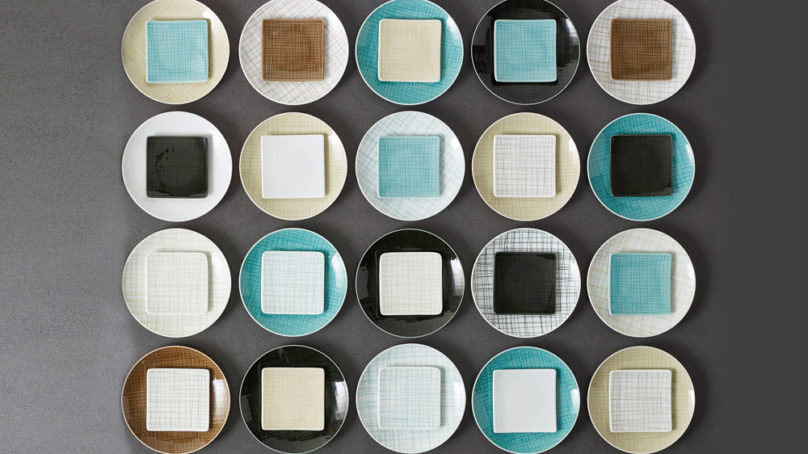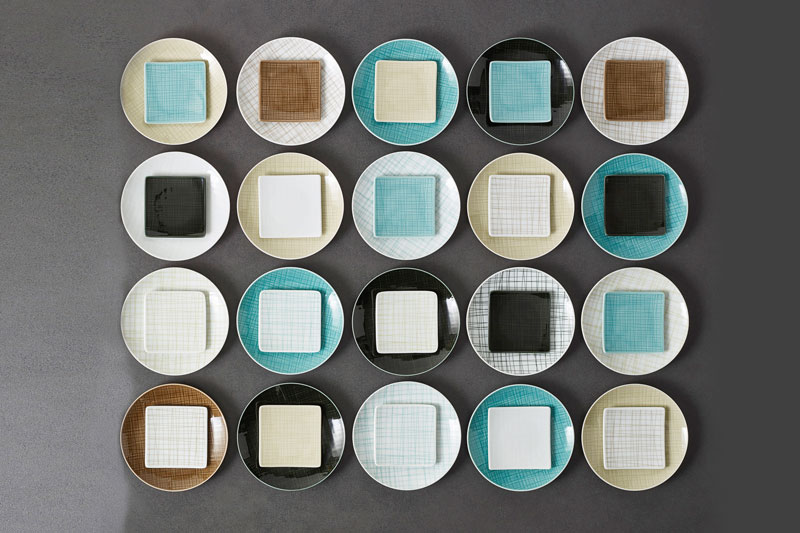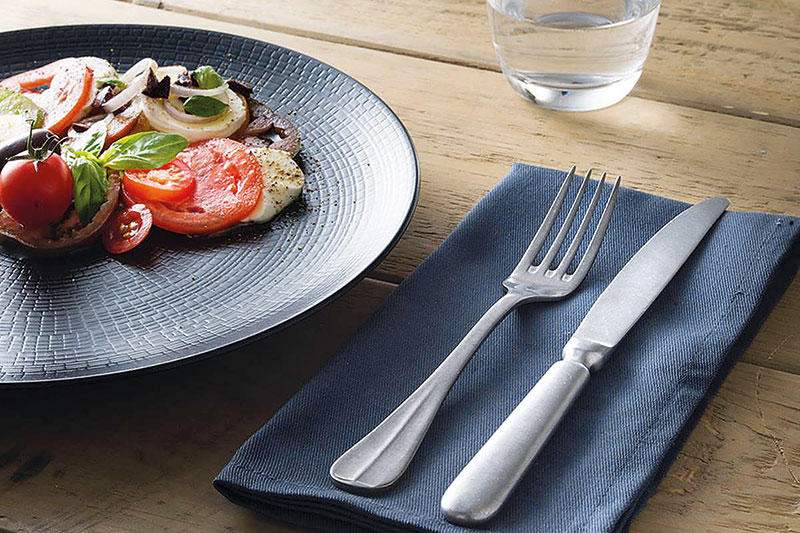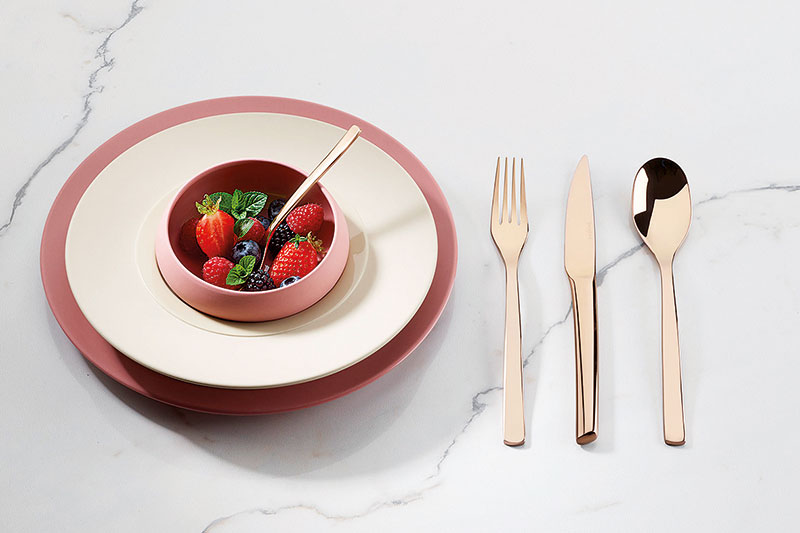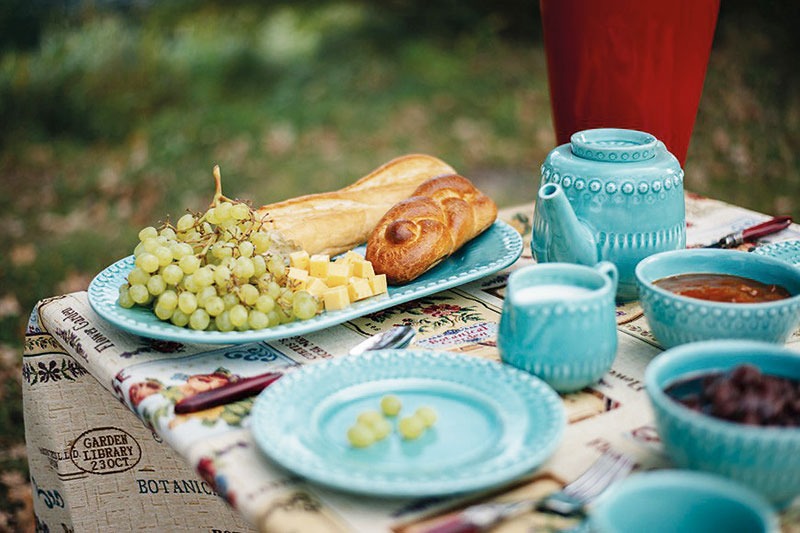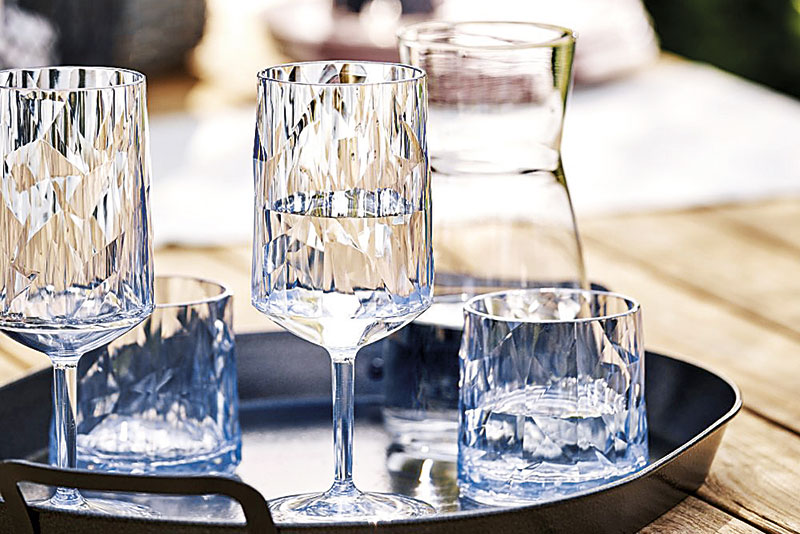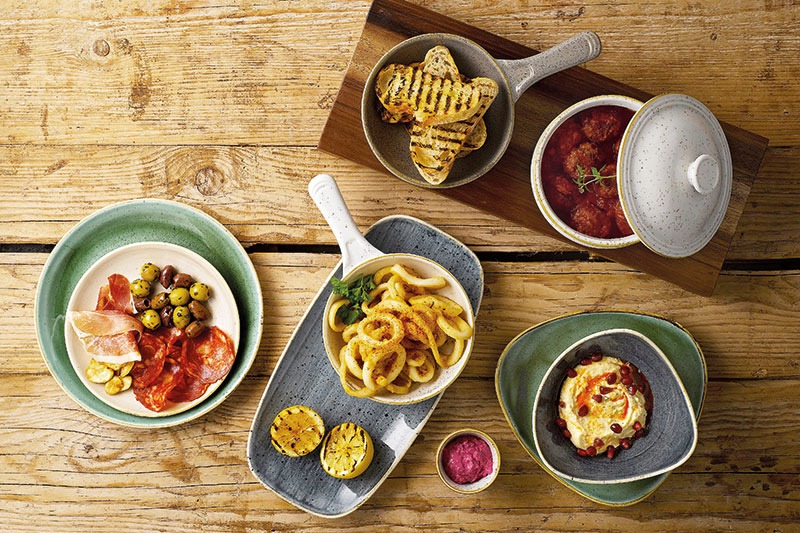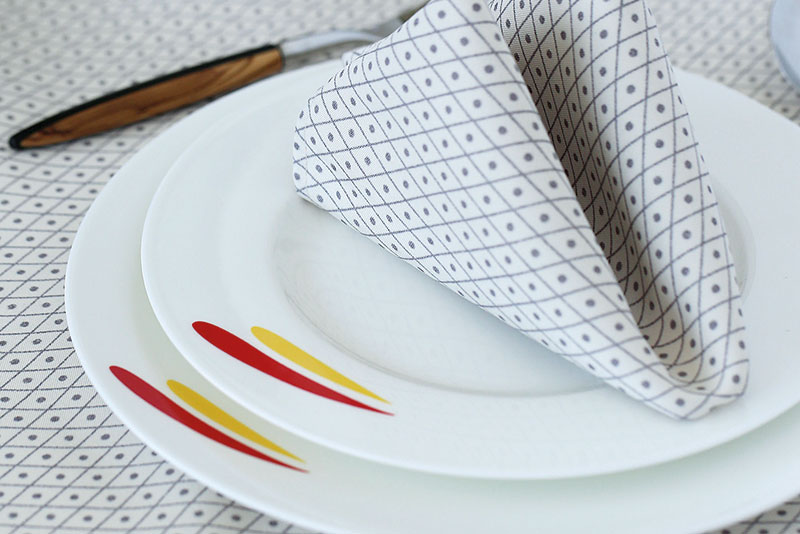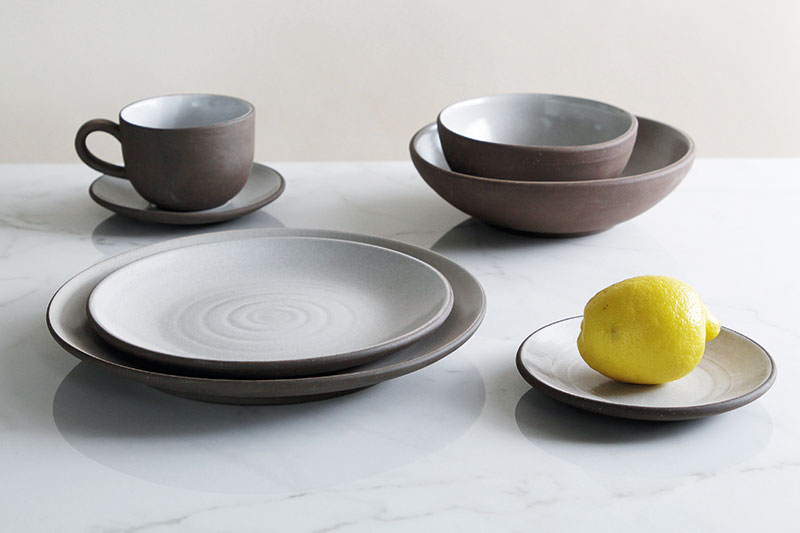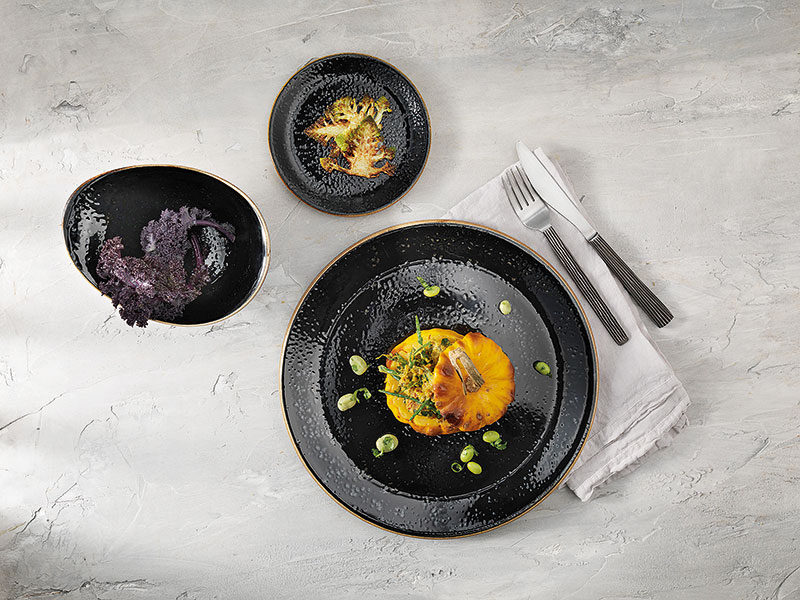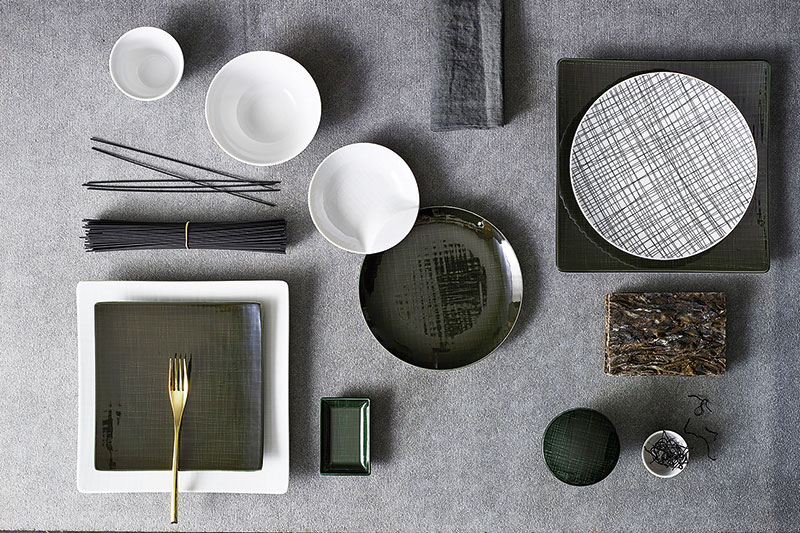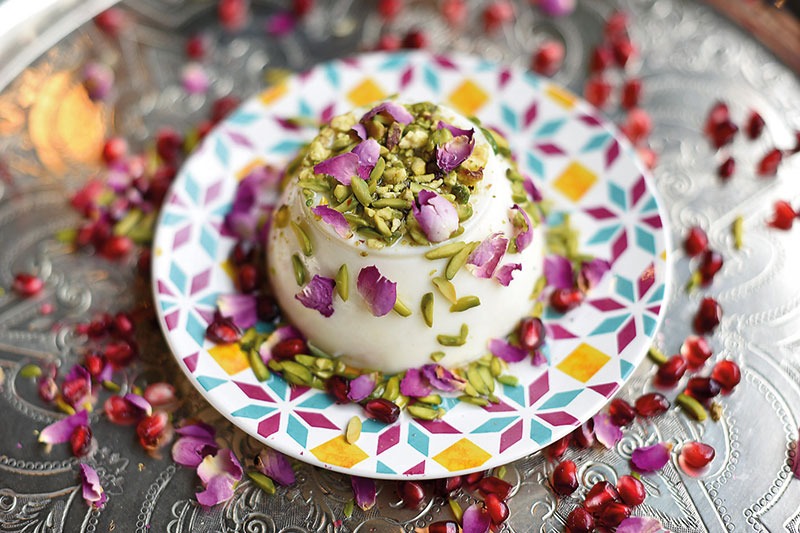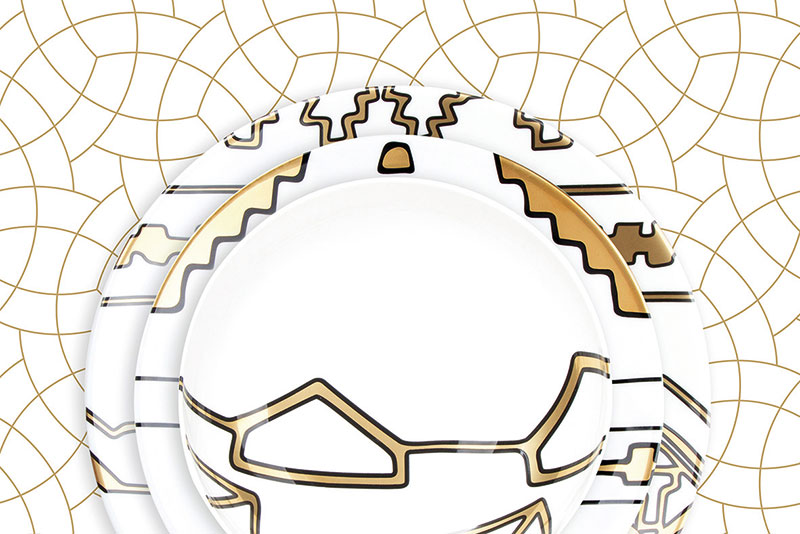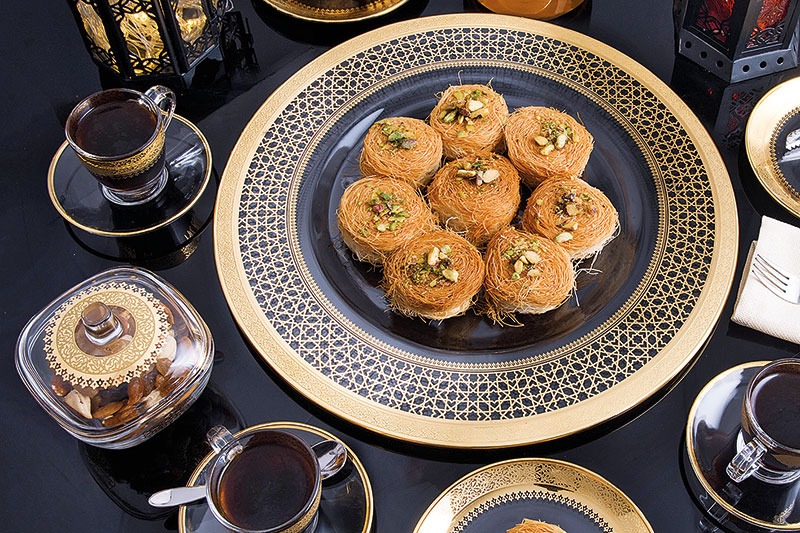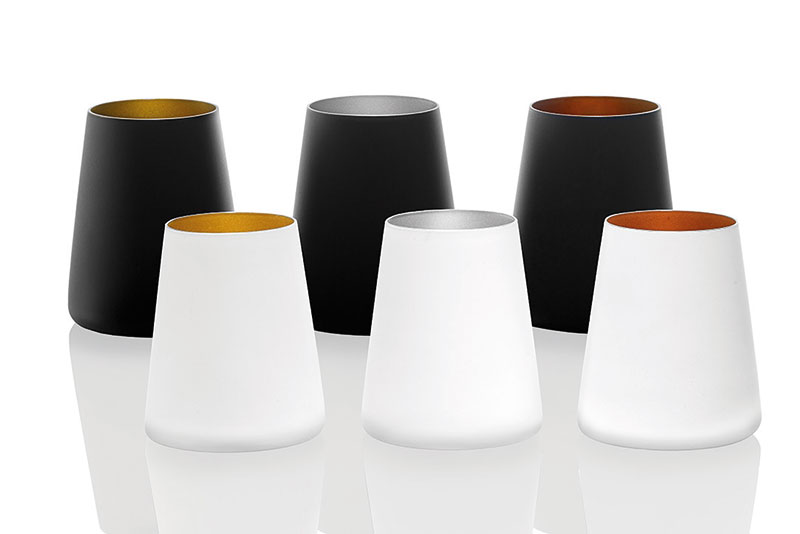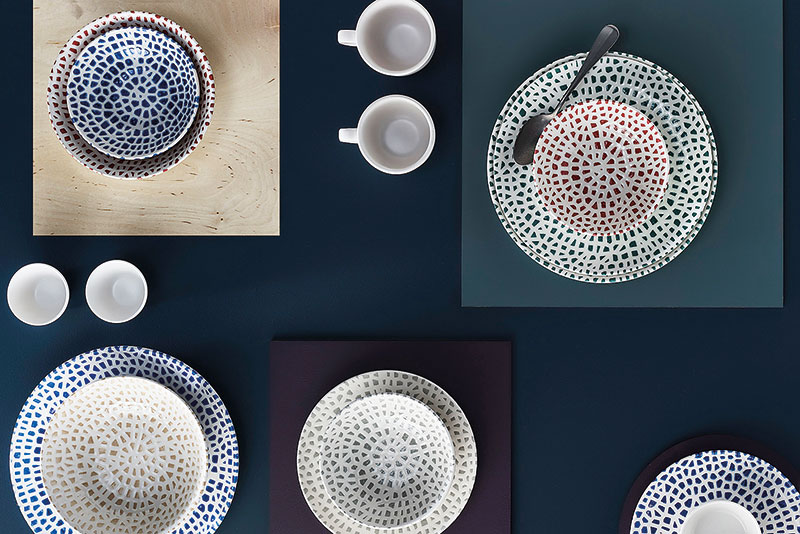Spanning a glorious mix of colors, textures, materials and styles from a variety of collections, today’s tableware is proudly flouting the rules of yesteryear, to wonderful effect
In our fast-changing world, fashion trends come and go with alarming speed, whether it’s clothes on the catwalk or diet fads. The world of tableware is no different, with today‘s collections more diversified than ever before, making bigger and bolder statements, while reflecting the growing demands of chefs and operators. Current trends include vibrant patterns and hues, a hint of opulence, innovative textures and unusual combinations of materials. Mix and match is the buzz-phrase, while the rule book has been thrown out of the window.
Mixing it up
“The clean and minimal lines of the last years have been overwhelmed by new and unstructured shapes and raw materials,” said Barbara Cincotto, worldwide sales and marketing director, hotel & restaurant division, Arcturus Group, which includes, among others, the Rosenthal and Sambonet brands. “We find now classical decorations applied to new materials and new color nuances and vice versa.”
The trend is one that the British pottery manufacturer Churchill has witnessed firsthand and moved to accommodate. “Five years ago, we were heavily weighted towards white products with very little colour, but now the opposite is true,” Adam Dennis, the company’s export account manager, said. “Our first colored range – Stonecast – was created around five years ago. Since then, this exciting collection of rustic, hand-decorated products, inspired by the changing seasons and fresh ingredients, has grown phenomenally, with the result that we now have a full range of new colors.”
New takes on texture
As well as embracing color, operators have shown themselves keen to acquire tableware that makes creative use of texture and materials, while also combining collections or adding individual pieces to their sets.
“There’s lots of mix and match,” Finola Barbour, marketing communications manager, at the British manufacturer of popular tabletop solutions, Steelite International, told HN. “Operators want to be able to combine color with whiteware, also different materials. Being able to put ceramic with glass or wood to create alternative table presentations will allow operators to build a unique offer.”
Nour Al Nimer, founder and creative director of the luxury chinaware label Nimerology, agreed, adding that her clients have recognized the benefits of curating a mix of chinaware. “Over the years they have collected pieces from different collections that they mix, giving an original and fresh feel to their table settings,” she noted.
Ensuring an outlet has its own character has become a priority for operators, helping them to individualize their brand and set it apart from the competition. Tableware is one way in which they can do this, according to Barbour.
“Operators want to have something a little bit different than their neighbor or rival around the corner,” she said. “So being able to offer customers one-off pieces that also work with our standard items enhances their offer.”
Getting personal
This desire for individuality may well be behind the trend for personalized and signature tableware, which is becoming increasingly popular and takes the concept of standing out to a whole new level.
Jono Pandolfi, CEO and creative director of the handmade ceramics company, Pandolfi Designs, which created the pieces for NoMad hotel and restaurant in New York, among others, and also produced a 1,000-piece collection for Marriott Dubai, told HN that buying customized tableware also enables concepts to create a fully harmonized look.
“We spend time with chefs and operators, working out exactly what they’re looking for, in terms of the clay body, texture and glaze,” he said. “We add to that our touch of hand, since everything we do is made to order, and that enables clients to ensure the pieces reflect and enhance the décor and character of their restaurant.”
Creating a culture
Tony Kitous, founder of the Lebanese and Middle Eastern concept Libanais Comptoir, is also a great believer in the important contribution that tableware can make in defining an outlet. His customized range of flatware and other items showcase a vast array of colours, themes and motifs, which Kitous explained also support his broader objective of introducing customers to the MENA region’s culture and cuisine.
“There’s no protocol, whether they’re birds, flowers, vegetables, fruit, tiles or a smiling lady, our brightly colored and beautiful designs are there to make customers feel happy,” he said. “But on another level, they also recall the influences and architecture of the region which, in turn helps people to relate to the food they’re eating. We’re very keen to take the food and the culture out of its authentic position and extend its reach to everybody.”
Kitous has taken this plan further still. “We are also a souk, which allows our customers to take a little bit of us home with them,” he added. “Hopefully we will inspire them in the kitchen.”
Pandolfi believes that the current trend for artisanal tableware is linked to the broader, rising interest among customers in traceability and transparency when it comes to their food.
“I think a lot of people today are obsessed with where things come from and the move toward custom-made tableware of the last few years dovetails with that,” he said. “It’s part of a bigger trend in fine dining that’s also trickled down to fast-casual restaurants.”
Using tableware to evoke a homely ambience is a popular strategy among operators, which may help to explain the move toward looks and designs reminiscent of grandma’s kitchen.
“Clients want to welcome their guests with a warm atmosphere and a dive into the past, where memories come back and they have the feeling of being at home,” Cincotto said.Even producers for large-scale operators have found ways of embracing this trend, as Dennis explained. “At Churchill, we are currently producing plates and bowls in high numbers that are slightly curved or off-center, which gives them a hand-thrown look, but ensures they retain the durability and practical advantages that our clients need,” he said.
The advent of social media has also played a major part in the rise of both custom-made and eye-catching tableware, providing an added incentive for operators to give extra thought to their plates and bowls.
“I believe that social media encourages creativity and self-expression,” Al Nimer noted. “Maybe correlated to this cultural phenomenon, I have seen a significant increase of interest for personalization of my clients’ tableware. Many are now interested in the bespoke service we provide; a personal touch that makes their table stand and pop out.” Finola agrees. “Instagram, in particular, is having a huge impact on what tableware operators choose,” she said. “Their decision is based on whether or not the plate will look good on social media.”
This phenomenon is also believed to have also contributed to the rise of more opulent tableware that showcases extra-special touches, from gold elements to platinum matte surfaces. Perhaps these are best displayed in the collaborative ventures that some operators have entered into with high-profile designers, such as the Rosenthal meets Versace collections. The two companies mark 25 years of partnership in 2018, which has provided a timely opportunity for the launch of an extra-special collection inspired by the Italian fashion designer who founded the partnership.






